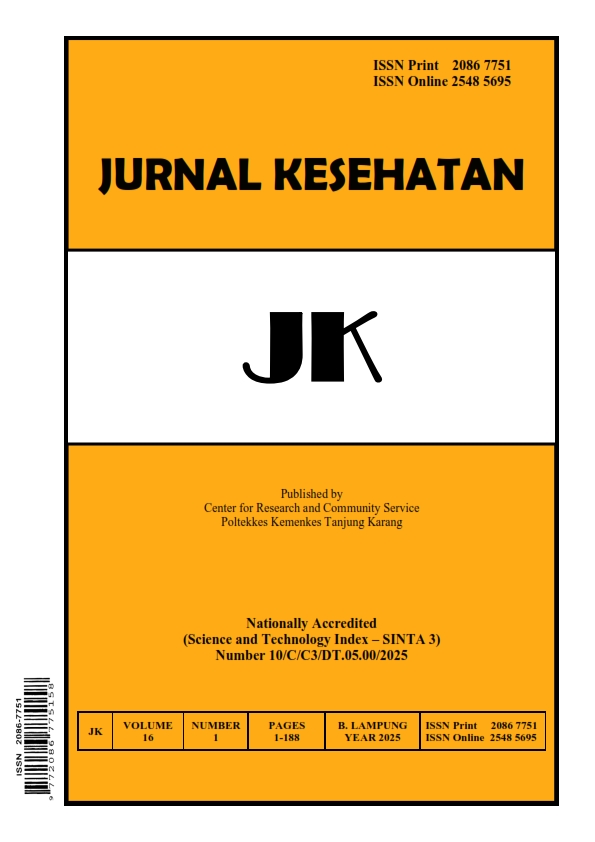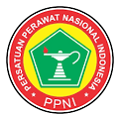Toxicological Exploration of Tapak Dara Catharanthus roseus as Bioinsecticide
DOI:
https://doi.org/10.26630/jk.v16i1.4773Keywords:
Larvacide, Mortality, Plant potentialAbstract
Mosquito control efforts have been done physically, chemically, and through environmental management. However, the use of synthetic chemical insecticides has various negative impacts. Therefore, plant-based alternatives are a solution that needs to be developed. This study explores the toxicological potential of Catharanthus roseus as a botanical bioinsecticide. This systematic review study takes data from the literature in the form of published articles obtained via the internet from Google Scholar, Semantic Sholar, Garuda, PubMed, and Science Direct databases. The subjects of the study were 12 articles that focused on using Catharanthus roseus as a larvicide. The selected journals were eligible based on the study of LC50, zero value, and No Observed Adverse (NOA) of Catharanthus roseus plant extract against mosquito larvae. The data are presented in tabular form. Several studies provided different results regarding LC50 and zero value, but only 1 study reported on NOA. Further research is needed to improve data consistency, especially on LC50 values and control effects, including against non-target organisms.
References
Ahyanti, M., & Yushananta, P. (2022). Kombinasi Ekstrak Daun Tapak Dara (Catharanthus roseus) Dan Daun Sirsak (Annona muricata) Sebagai Bio-larvasida. Ruwa Jurai: Jurnal Kesehatan Lingkungan, 16(3), 113-123. https://doi.org/10.26630/rj.v16i3.3611
Chettiar Kamatchi, P. A., & Maheswaran, R. (2016). Evaluation of Larval Toxicity of Lantana Camara L. and Catharanthus Roseus L. against Culex Quinquefasciatus say and Aedes Aegypti L. Entomology, Ornithology & Herpetology: Current Research, 5(1), 2-5. https://doi.org/10.4172/2161-0983.1000170
Devillers, J. (2020). Fate and ecotoxicological effects of pyriproxyfen in aquatic ecosystems. Environmental Science and Pollution Research, 27(14), 16052-16068. https://doi.org/10.1007/s11356-020-08345-8
Dewi, V., Al-Bari, A., Agni Hutahaen, T., Studi Farmasi, P., & Nahdlatul Ulama Sunan Giri, U. (2023). Uji Toksisitas Ekstrak Daun Tapak Dara (Catharantus roseus L.) Menggunakan Metode BSLT Dengan Variasi Perbedaan Pelarut Ekstraksi. Jurnal Farmasi, Kesehatan Dan Sains (FASKES), 1(1), 25-31. https://journal.unugiri.ac.id/index.php/faskes/article/view/1420/929
Ekaputri, R., Sudarsono, S., & Mulyaningsih, B. (2014). Larvicidal Effect of Vinca Fruit Extract (Vinca rosea) Against Aedes aegypti Larvae and Secondary Metabolites Profile by Thin Layer Chromatography. Biology, Medicine, & Natural Product Chemistry, 3(1), 31-33. https://doi.org/10.14421/biomedich.2014.31.31-33
Hashim, M., Arif, H., Tabassum, B., Rehman, S., Bajaj, P., Sirohi, R., & Khan, M. F. A. (2024). An overview of the ameliorative efficacy of Catharanthus roseus extract against Cd2+ toxicity: implications for human health and remediation strategies. Frontiers in Public Health, 8(12), 01-11. https://doi.org/10.3389/fpubh.2024.1327611
Kumar, S., Wahab, N., Mishra, M., & Warikoo, R. (2012). Evaluation of 15 local plant species as larvicidal agents against an Indian strain of dengue fever mosquito, Aedes aegypti L. (Diptera: Culicidae). Frontiers in Physiology, 3(4), 1-6. https://doi.org/10.3389/fphys.2012.00104
Najukha, Y., Yulianti, E., & Ferdinal, F. (2024). Skrining Fitokimia dan Uji Toksisitas Ekstrak Bunga Tapak Dara (Catharanthus Roseus). Jurnal Sehat Indonesia, 7(1), 93-99. https://doi.org/10.59141/jsi.v7i01.208
Novitasari, V., Ganefianti, D. W., & Handajaningsih, M. (2021). Karakterisasi, Variabilitas Genetik dan Heritabilitas Genotipe Tapak Dara (Catharanthus roseus). Jurnal Agronomi Indonesia (Indonesian Journal of Agronomy), 49(3), 308-315. https://doi.org/10.24831/jai.v49i3.37742
Panneerselvam, C., Murugan, K., Kovendan, K., Kumar, M., Ponarulselvam, S., Amerasan, D., Subramaniam, J., Hwang, J.-S., & Kovendan, K. (2013). Larvicidal efficacy of Catharanthus roseus Linn. (Family: Apocynaceae) leaf extract and bacterial insecticide Bacillus thuringiensis against Anopheles stephensi Liston. Asian Pacific Journal of Tropical Medicine. https://doi.org/10.1016/S1995-7645(13)60151-0
Putri, A. P., & Pandapotan Nasution, M. (2022). Skrining Fitokimia Dan Uji Sitotoksisitas Ekstrak Etanol Daun Tapak Dara (Catharanthus Roseus L.) Dengan Metode Brine Shrimp Lethality Test (Bslt). Journal of Health and Medical Science, 1(2), 203-219. https://doi.org/10.32696/fjfsk.v2i1.1372
Rajan, D. S., & Varghese, T. A. (2017). An evaluation of the larvicidal efficacies of aqueous leaf extracts of Lantana camara and Catharanthus roseus against mosquito larvae. International Journal of Mosquito Research, 4(3), 93-97.
Sakka, M. K., Ioannou, C. S., Papadopoulos, N. T., & Athanasiou, C. G. (2023). Residual efficacy of selected larvicides against Culex pipiens pipiens (Diptera: Culicidae) under laboratory and semi-field conditions. Environmental Science and Pollution Research, 30(14), 40931-40941. https://doi.org/10.1007/s11356-022-24654-6
Sari, M., Surbakti, C., Khairani, T. N., Sari, W. N., & Nasution, G. S. (2022). Toxicity Test of Catharanthus roseus Flower Extract with Brine Shrimp Lethality Test Method. International Journal of Science and Environment, 2(1), 24-32. https://doi.org/10.51601/ijse.v2i1.12
Tennyson, S., Arivoli, S., Raveen, R., Selvakumar, S., Jayakumar, M., & Kumar, L. (2018). Bioefficacy of Catharanthus roseus (L.) G. Don (Apocyanaceae) and Hyptis suaveolens (L.) Poit (Lamiaceae) ethanolic aerial extracts on the larval instars of the dengue and chikungunya vector Aedes aegypti Linnaeus 1762 (Diptera: Culicidae). International Journal of Mosquito Research, 5(4), 7-18. https://www.dipterajournal.com/pdf/2018/vol5issue4/PartA/5-3-27-127.pdf
Ulpa, M., Dorliana Sitanggang, K., Walida, H., & Sepriani, Y. (2022). Karakteristik Morfologi dan Analisis Kandungan Senyawa Fitokimia Berbagai Tapak Dara (Catharanthus roseus). Jurnal Mahasiswa Agroteknologi (JMATEK), 3(2), 49-57. https://jurnal.ulb.ac.id/index.php/JMATEK/article/view/3178
Variavan, S., Thangapandiyan, S., & Alisha, A. S. A. (2018). Larvacidal Efficacy of Catharanthus roseus Leaf Extract againts the Filarial Vector Culex quinquefasciatus (Dipter: Culicidae). International Journal of Pharmaceutical Sciences Review and Research, 51(1), 19-25. https://globalresearchonline.net/journalcontents/v51-1/04.pdf
Downloads
Published
Issue
Section
License
Copyright (c) 2025 Mei Ahyanti

This work is licensed under a Creative Commons Attribution-ShareAlike 4.0 International License.
Authors who publish in this journal agree to the following terms:
- Authors retain copyright and grant the journal right of first publication with the work simultaneously licensed under a Creative Commons Attribution License (CC BY-SA 4.0) that allows others to share the work with an acknowledgment of the work's authorship and initial publication in this journal.
- Authors can enter into separate, additional contractual arrangements for the non-exclusive distribution of the journal's published version of the work (e.g., post it to an institutional repository or publish it in a book), with an acknowledgment of its initial publication in this journal.
- Authors are permitted and encouraged to post their work online (e.g., in institutional repositories or on their website) prior to and during the submission process, as this can lead to productive exchanges and earlier and greater citations of published work.












